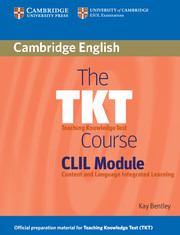Unit 4 - Cognitive skills across the curriculum
Published online by Cambridge University Press: 27 September 2023
Summary
What are cognitive skills?
Cognitive skills or thinking skills are the processes our brains use when we think and learn. Cognitive skills develop from a very young age. Learners progress from information processing or concrete thinking skills, such as identifying and organising information (the what, when, where, which, who and how many questions), to abstract thinking, such as reasoning and hypothesising (the why and what if questions). Other examples of thinking skills are:
creative thinking and synthesis, for example when we use our knowledge to imagine, to solve problems and to think of new ideas
enquiry skills, for example when we ask questions and plan how to do research
evaluation skills, for example when we use criteria to comment on how good our work is.
Learners need to develop a range of cognitive skills as well as language for thinking. As we saw in Unit 1, they need to develop cognitive academic language proficiency (CALP) so they can study curriculum subjects in a non-native language.
Key concepts
What cognitive skills can you think of? Think about the activities your learners do and which cognitive skills they use.
Look at the examples of cognitive skills in the table below. Read the classroom activities used to develop the cognitive skills and the example activities from different CLIL subjects. It is important that learners have opportunities to develop these skills.
What are LOTS and HOTS?
Cognitive skills can be divided into lower order thinking skills (LOTS) and higher order thinking skills (HOTS). The table on the next page gives examples of why we use lower order and higher order thinking skills. We can link these reasons to the cognitive skills in the table above. For example, remembering and dividing are examples of LOTS, while reasoning and evaluating are examples of HOTS.
Key concepts in the CLIL classroom
Learners need progressively challenging tasks so they can develop thinking skills. e.g. (maths) Measure the radius of the circle. → How can you calculate the diameter? (music) How many beats are in the bar? → Why does the composer change the rhythm?
- Type
- Chapter
- Information
- The TKT Course CLIL Module , pp. 20 - 25Publisher: Cambridge University PressPrint publication year: 2010



